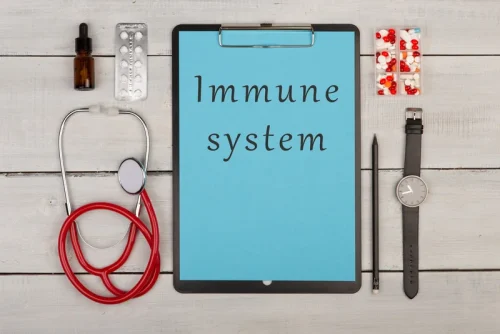Medical Terms in Lay Language Human Subjects Office Office of the Vice President for Research The University of Iowa
Sober living
Medical Terms in Lay Language Human Subjects Office Office of the Vice President for Research The University of Iowa

Half-life cycles are multiples of the standard half-life time window. On average, up to 90 to 95 percent of amphetamines leave your system after four half-life cycles. This means, 90 to 95 percent of amphetamine materials leave your system within eight to 48 hours provided you’re in good health. Oral fluid tests can detect amphetamines from 24 to 48 hours after intake.
What are the signs and symptoms of an opioid overdose and what do I do?
- This could feel like a “rush” or a euphoric feeling that makes you happy and elevates your mood.
- Meth causes your brain to release its stores of both these neurotransmitters, contributing to meth’s pleasurable effects.
- It depends on the medication and what kind of side effect has developed.
- This sensation only lasts a short while — often a few minutes — but the drug itself can stay in your body for a much longer period of time.
In some cases, doctors may also prescribe amphetamines to aid weight loss, or to treat mental health conditions like depression. When a person consumes amphetamines, they are broken down by the liver and released into the bloodstream. To avoid withdrawal symptoms, take your medication exactly as your provider prescribed it to you.
- It can tell if someone has used most drugs for a significantly longer period, sometimes up to the past 90 days.
- For more information on alcohol withdrawal and detox, click here.
- There are a variety of reasons that a drug test might need to be conducted such as probation, legal cases, custody, divorce, employee testing, and court-ordered testing.
- Benzodiazepines usually stay in your system for 2 to 7 days if being detected by a urine test but can be detected for longer if the use is repeated.
- Aspirin is recommended for pregnant people with SLE to prevent blood clots and miscarriage.
- Enteric-coated aspirin takes longer but must be chewed to exhibit the same rapid onset.
After effects
It works by changing the amounts of certain natural substances in the brain. Tramadol has a boxed warning from the Food and Drug Administration (FDA), which alerts doctors and patients about potentially dangerous drug effects. Warnings for tramadol include the risk of addiction and abuse, slowed or stopped breathing, life-threatening effects for children, and potential fatality when used with certain medications. Resources are available for those looking for more information on the warning signs of tramadol addiction, withdrawal symptoms, detox, and treatment options. Like other opiates, hydrocodone presents a high risk of dependency, and it can impair one’s breathing, heart rate, and speech.
Home drug tests
Many people have attempted to use masking agents to pass a drug test. It is a common myth that vitamin B3 (niacin) can cleanse toxins from the body, but no evidence of its effectiveness exists. The therapeutic effects of an immediate-release tablet of Adderall begin 45 to 60 minutes after use, with peak effects occurring two to three hours after ingestion. Additionally, extended-release versions of the drug can be traced in the body for lengthier periods of time than immediate-release formulations.
When Should You Seek Help For Addiction?
If you get a positive result after a drug screening, the examiners may encourage you to consider substance use treatment. They may refer you to a local program, but you can also ask a doctor or mental health professional how long do amphetamines stay in urine for treatment recommendations. Alcohol is a central nervous system depressant, and although it is legal for people over 21 in America, it is commonly abused and causes approximately 95,000 deaths each year.

Consuming cocaine that contains synthetic opioids greatly increases your risk of experiencing a potentially life threatening overdose. These can show up anywhere from a few hours to a few days after your last use. Cocaine withdrawal symptoms often resolve within several days, but some people might experience lingering symptoms for a few weeks. If you or your child are taking amphetamine for ADHD, your doctor will probably https://ecosoberhouse.com/boston-sober-house-roxbury/ start you on a low dose of amphetamine and increase your dose gradually, every 4 to 7 days, depending on the medication. Your doctor may tell you to stop taking amphetamine from time to time to see if the medication is still needed. Tell your doctor if you or anyone in your family drinks or has ever drunk large amounts of alcohol, uses or has ever used street drugs, or has overused prescription medications.
- If you feel comfortable doing so, you can reach out to your primary healthcare professional and ask if they can prescribe anything to help you manage your symptoms.
- However, amphetamines are also commonly misused by recreational drug users.
- Substance abuse treatment can help you put your life and health back on track.
- They may refer you to a local program, but you can also ask a doctor or mental health professional for treatment recommendations.
- Misusing or taking amphetamines that your provider did not prescribe to you can cause dangerous side effects and could lead to addiction or death.
- For example, if amphetamines are swallowed, the effects are typically felt more slowly and can be less intense.
- If someone you know has attempted suicide, call 911 or the local emergency number right away.
Lisdexamfetamine, a long-acting amphetamine medication, is FDA-approved for the treatment of a binge-eating disorder. Amphetamine is a medication used in the management and treatment of ADHD and narcolepsy. This activity reviews the indications, action, and contraindications for amphetamine as an agent in treating ADHD and narcolepsy. When a person uses amphetamines, a proportion of the drug and its metabolites are released into the bloodstream, with a small amount being excreted by the body in a variety of ways.


Amphetamine may cause new or worsening psychosis (unusual thoughts or behavior), especially if you have a history of depression, mental illness, or bipolar disorder. It does so with the liver and its production of alcohol dehydrogenase enzymes. Some of the alcohol will be eliminated from the body by urination, sweat, and even breath. However, this accounts for only about 10% of the consumed alcohol. This means that the liver is the main organ responsible for removing alcohol from the body. By T’Keyah Bazin, PharmDT’Keyah Bazin, PharmD, is a clinical pharmacist and experienced health content writer.
- There are severe health effects of synthetic cannabinoids, including breathing problems, muscle damage, heart attack, and kidney failure.
- It is also not uncommon for amphetamine users to experience ‘amphetamine psychosis’ which can lead to paranoia, erratic behaviour, restlessness, and irritability.
- Using a swab or absorbent pad are the most common ways to take a saliva specimen.
- Some of the alcohol will be eliminated from the body by urination, sweat, and even breath.
- Drugs can even affect the same person differently when taken at a different time.
- It has indications as a first-line agent for ADHD in adults and children six years of age and older.

